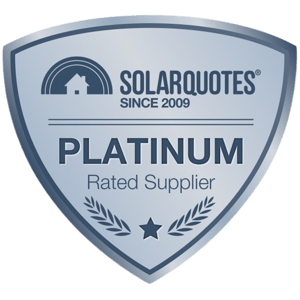Best Solar Panel Placement Tips

Discover the key tips for optimal solar panel placement to maximize energy efficiency and savings.
Maximising Solar Efficiency through Proper Placement
Proper placement is crucial for maximizing the efficiency of solar panels. By positioning the panels in the right location, you can ensure that they receive the maximum amount of sunlight throughout the day. This will result in higher energy generation and greater savings on your electricity bills. When determining the placement of your solar panels, there are a few factors to consider. These include the orientation of your roof, potential shading obstacles, and the tilt and angle adjustment of the panels.
One important aspect of proper placement is understanding the sun exposure and angle. Solar panels should ideally be placed in an area where they receive direct sunlight for the majority of the day. This means avoiding locations that are heavily shaded by trees or buildings. By maximizing sun exposure, you can optimize the energy generation of your solar panels.
Another factor to consider is the evaluation of roof orientation for optimal sunlight capture. The direction your roof faces can significantly impact the amount of sunlight your panels receive. In general, a south-facing roof is considered the best option for solar panel installation. This orientation allows the panels to capture the maximum amount of sunlight throughout the day. However, east and west-facing roofs can also be viable options, depending on the specific circumstances of your property.
Assessing potential shading obstacles is also crucial for proper solar panel placement. Shading can greatly reduce the efficiency of your panels, as it limits the amount of sunlight they receive. Before installing your solar panels, carefully evaluate the surrounding environment for any objects that may cast shadows on the panels, such as nearby buildings, trees, or even chimneys. If shading is unavoidable, consider implementing shading mitigation techniques, such as trimming trees or adjusting the panel positioning.
Considerations for tilt and angle adjustment are another important aspect of solar panel placement. The tilt and angle of your panels can affect their energy generation. In general, the optimal tilt angle for solar panels in Australia is equal to the latitude of your location. However, adjusting the tilt angle based on the season can further maximize energy generation. For example, tilting the panels more upright during winter can help capture more sunlight during shorter days.
Ground-mounted solar panel options are worth exploring, especially if your roof is not suitable for installation. Ground-mounted panels can be positioned in an optimal location on your property to maximize sun exposure. This option also provides flexibility in terms of panel orientation and tilt angle adjustment.
Optimizing solar panel placement for seasonal variations is another important consideration. As the angle of the sun changes throughout the year, adjusting the tilt angle of your panels can help capture the maximum amount of sunlight. This can be done manually or through the use of solar tracking systems that automatically adjust the panel position based on the sun's movement.
Incorporating solar tracking systems can further enhance the efficiency of your solar panels. These systems use sensors to track the movement of the sun and adjust the panel position accordingly. By continuously optimizing the panel's angle towards the sun, solar tracking systems can significantly increase energy generation.
When planning for solar panel placement, it is important to consider compliance and planning permission. Depending on your location and the regulations in place, you may need to obtain permits or adhere to specific guidelines. Research the local regulations and consult with professionals to ensure that your solar panel installation complies with all requirements.
In conclusion, implementing effective solar panel placement is crucial for maximizing energy generation and savings. By considering factors such as proper orientation, shading obstacles, tilt and angle adjustment, and the use of solar tracking systems, you can optimize the efficiency of your panels. Additionally, ensure compliance with local regulations to avoid any legal issues. With the right placement, you can harness the power of the sun and enjoy the benefits of renewable energy.
%20(1).png?width=265&height=96&name=www.smartenergyanswers.com.auhs-fshubfsSmart%20Energy%20Answers%20Logo%20(HIRES)%20(1).png)

.png?width=514&height=121&name=Tesla%20Powerwall%203%20(new).png)







